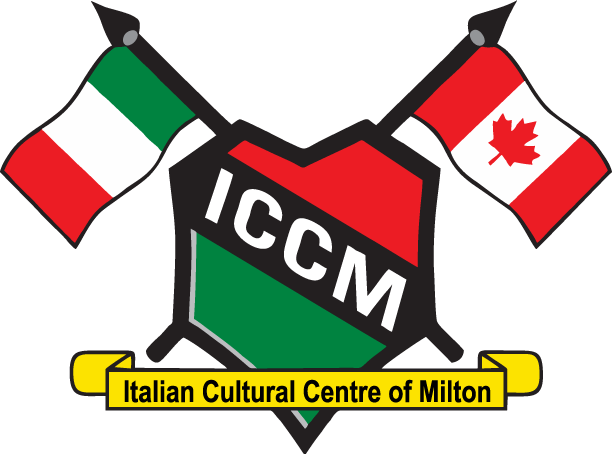Campania
The Campania region is part of southern Italy on the Tyrrhenian Sea between the Garigliano River on the north and the Gulf of Policastro on the south. It has 350 kilometres of coastline that includes the gulfs of Naples, Salerno, and Policastro. It also includes the Amalfi Coast, and the Aegean Islands of Ischia, Procida, Vivara, Nisida, and Capri. Campania is known for its archeological treasures which include the temples left by the Greeks in Paestum, the buried town of Pompeii and Herculaneum. It is also home to the remains of Greco-Roman Velia, the second-largest Roman amphitheater in Italy. The famous Mount Vesuvius is located on the Gulf of Naples in Campania Italy about 9 km east of Naples and is one of only two active volcanos in continental Europe. The slopes of Vesuvius are covered with vineyards and orchards, and the wine grown here is known as the Lacrima Christi which translates to Tears of Christ.

Capital – Naples
Napoli comes from the Greek word Neapolis which means “new city” or “new town”. It was originally given this name by its early Greek inhabitants in the 8th century BC. Naples is one of the oldest inhabited cities in the world. It is dominated by Mount Vesuvius which is considered to be one of the most dangerous volcanos in the world. It is one of two active volcanos in Europe.
Naples has numerous royal palaces, castles, and ancient ruins with some of Christianity’s oldest frescoes. The port of Naples is one of the most important in Europe. It also has the 4th largest urban economy in Italy.
Naples is synonymous with Pizza, especially Pizza Margherita. Its history dates back to 1889 when Queen Margherita of Savoy visited Naples, where she was served a pizza that was made to resemble the colors of the Italian flag: red tomatoes, white mozzarella cheese, and green basil.
Margherita has become one of the most popular pizza varieties in the world, and in 2009, it was protected as one of the three Pizza Napoletane with an STG European label of protection, proving its excellence in flavor, ingredients, and traditional pizza-making techniques.
Foods of Campania

Neapolitan Pizza
Or pizza Napoletana, originated in Naples. It is prepared with basic dough, raw tomatoes, fresh mozzarella cheese, fresh basil and olive oil. For many it is the best pizza in the world.

Risotto alla Pescatora
A seafood risotto popular in Naples and the Amalfi Coast. The flavours of fresh fish and rice are a favourite.
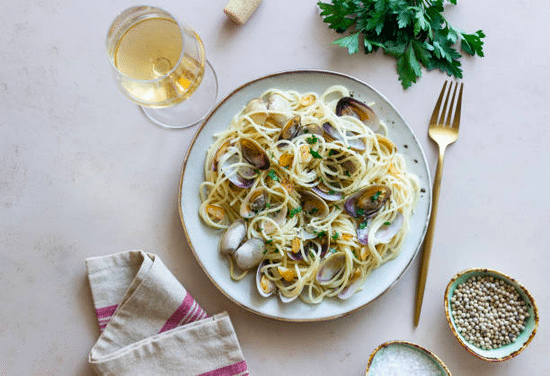
Spaghetti con le Vongole
Clams, olive oil, garlic, and parsley served with spaghetti.
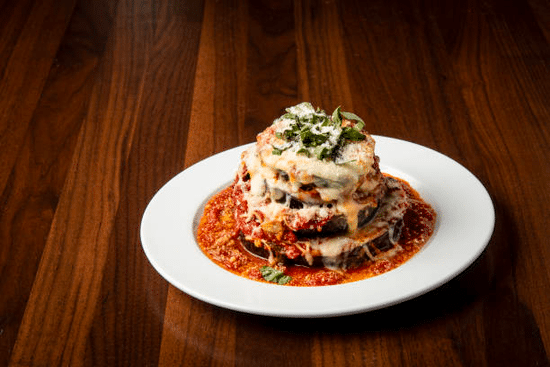
Eggplant Parmigiana
Thin slices of fried eggplant layered with tomato sauce, mozzarella and basil and then baked.

Caprese Salad
Sun-ripened tomatoes, fresh basil gently torn and a drizzle of olive oil over the region’s popular buffalo mozzarella (buffalo milk cheese). Named after the famous island of Capri.
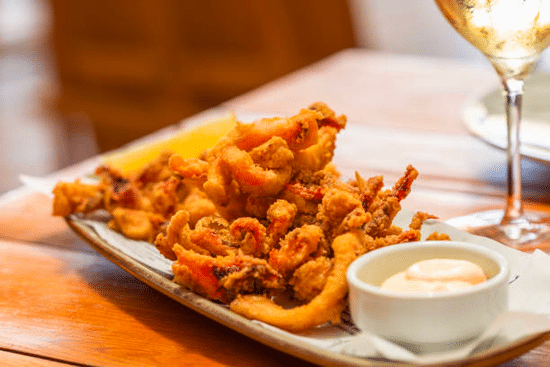
Fritto Misto di Mare
Fresh fried seafood which features calamari, shrimp, and anchovies.
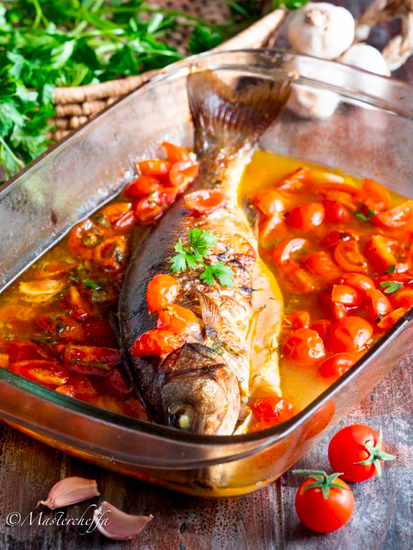
Pesca all'Acqua Pazza
Fresh fish simmered in water with garlic, tomatoes, and parsley.
UNESCO World Heritage Sites in Campania
Historic Centre of Naples
Metropolitan City of Naples
Naples, Founded in 470 BCE by Greek colonists, was one of the most important cities of Magna Grecia, of the Roman Republic, and the capital of the Kingdom of Naples under several royal houses. It was highly influential on European arts and architecture. Some of the important monuments include the Church of Santa Chiara from the 14th century, the Castel Nuovo from the 13th century (pictured), and the Royal Palace from the 17th century. A minor boundary modification took place in 2011.
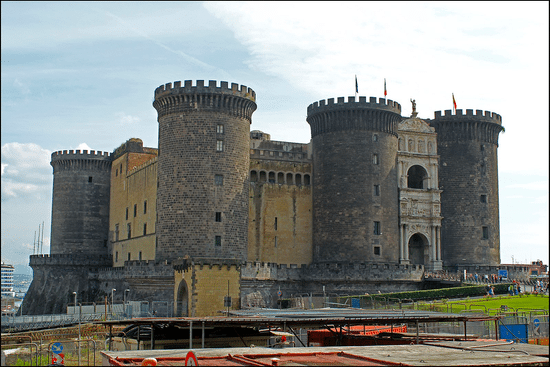
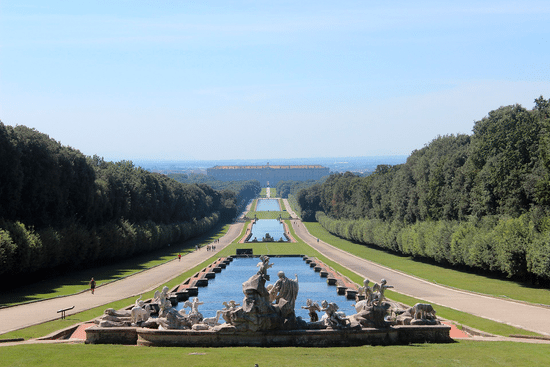
18th-Century Royal Palace at Caserta with the Park, the Aqueduct of Vanvitelli, and the San Leucio Complex
Caserta and Benevento
Large scale palace complex was commissioned by the Bourbon King of Naples Charles III in the mid 18th century. It was designed by the architect Luigi Vanvitelli and inspired by palaces in Versaiiles and Madrid. Inspired by the ideas of the Enlightenment, the complex is well integrated into the landscape. The site includes an aqueduct and the industrial complex of San Leucio where silk was produced.
Archaeological Areas of Pompei,Herculaneum and Torre Annunziata
Metropolitan City of Naples

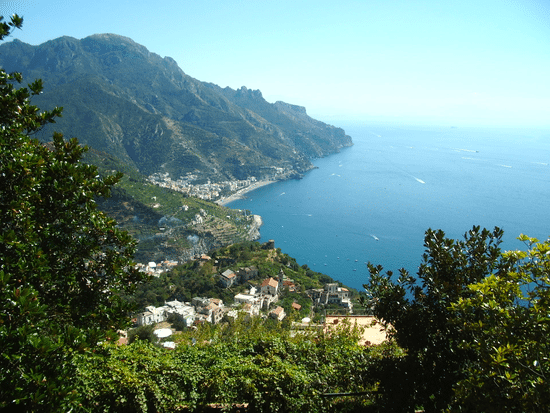
Amalfi Coast (Costiera Amalfitana)
Salerno
The Mediterranean cultural landscape of the Amalfi Coast was shaped prominently during the time of the Medieval Duchy of Amalfi (from the 9th to 11th century) in a mixture of Western and Byzantine influences. The coast includes towns, such as Amalfi and Ravello, as well as vineyards, orchards, and pastures, at the point where the mountains are touching the sea.
Cilento and Vallo di Diano National Park with the Archeological Sites of Paestum and Velia, and the Certosa di Padula
Salerno
The cultural landscape was shaped by different societies through centuries, including Etruscans, Lucanians, Greek colonists, and later Romans. The site includes the remains of Paestum and Velia, two major towns from classical times. The Carthusian monastery. Certosa di Padula dates to 1306.
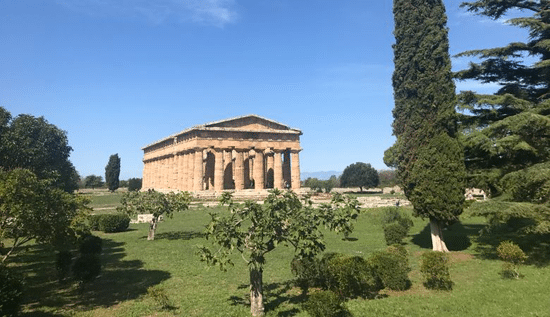
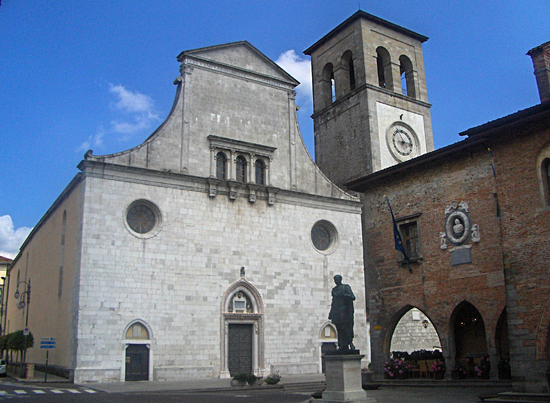
Longobards in Italy
SienaPlaces of the Power (568-774 A.D.)
This site comprises of seven groups of monasteries, churches, and fortresses associated with the Longobards who ruled in Italy from the 6th to the 8th century. The arts and architecture reflect the synthesis of Roman, Christian, and Germanic influences. The monuments listed are located in Brescia, Cividale del Friuli (cathedral pictured), Castelseprio, Spoleto, Campello Sul Clitunno, Benevento, and Monte Sant’Angelo. Its architecture marks a synthesis of various styles and the transition to the Middle Ages.
